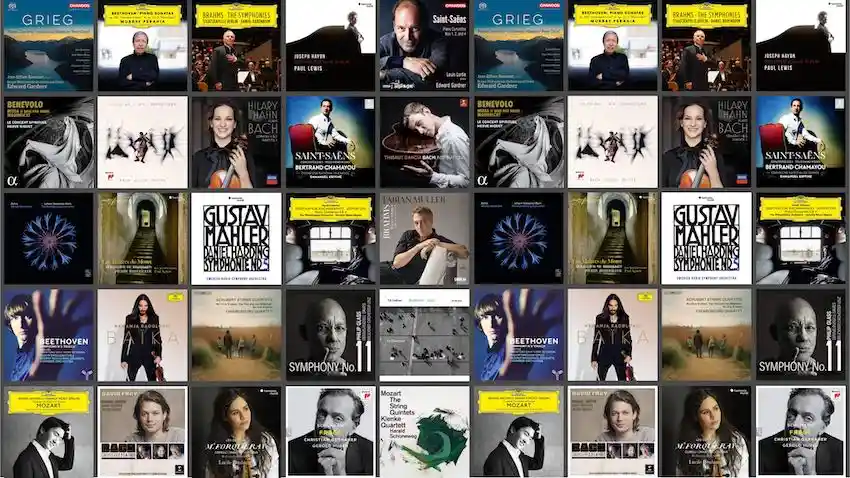Image: (c) Jean-Baptiste Millot
Whether a coincidence or deliberate, this is a third significant Saint-Saëns recording coming our way within a few months, after Chamayou and Lortie’s accounts covered here last year. This album, surprisingly, does not contain the best-known concerto (No. 2) as both previous albums did, and presents an attractive program of concertos No. 3-5, with a CD filled with 81 minutes of music.
The Third Concerto is rather neglected even compared to the rest of the concertos, which are not programmed often on concerts (a small resurrection is happening with the “Egyptian” Concerto as of late). From the opening bar of this performance, it is remarkable how clear and chamber-like is the exchange of musical phrases between soloist and orchestra. The Tapiola Sinfonietta, a 40 players group, allows for this transparency without ever wanting in fullness, nor projecting detached coldness as can often happen with smaller ensembles. The slow movement is wonderful here (listen to the lovely-voiced first entry of the pianist), as well as the finale, where Kantorow’s playfulness with the piano role is executed with little pedal and impressive finger work.
When we get to the darker Fourth Concerto, we enter into a more intimate, inward sound, much missing from the latest Lortie performance. The strings here playing with little to no vibrato, yet executing the musical argument with the utmost affection. Kantorow sounds freer here in the piano part, adding more pedal and arpeggios in the left hand, taking us back to past performance as the famous Cortot version (Naxos). The only drawback is that the choral-like wind segment at the first movement (5:00 onward, track 4), could have been played with more character and overall balance (Stephen Hough with the CBSO has the edge here), yet Kantorow’s response is so charming one soon forgets about this tiny detail. Another highlight is the slow segment in the second (and last) movement, where the pianist embraces a French salon style (5:20, track 5), again reminiscent of a style long gone. Or right after this segment, where he moves on to the waltz-like rhythm with a superb pizzicato accompaniment from the strings. The highly difficult technical challenges that follow until the end of the movement are met with impressive accuracy.
Get periodic updates about new classical music albums reviews, news and guides.
We respect your privacy.
The Fifth (“Egyptian”) Concerto finds the soloist, orchestra and conductor on top form, with an exciting performance as any. Examples are numerous but few should be pointed out. The dramatic short crescendos by the strings in the first movement, the contrapuntal clarity and the slowing down towards the second movement, which is given a mesmerizing treatment (2:00 onward – and this time the woodwind sound terrific). Kantorow and co catch the essence of this somewhat elusive concerto, making sense of the changing moods and characters that makes many other performances fall down. The oriental inspired second movement is nice and punchy (though a tad exaggerated timpani). It’s hard competing with Chamayou’s fascinating voicing of the piano part, maybe the best on record. Yet this is certainly a dynamic and enjoyable account, which can stand the comparison with the best (some alternatives listed below).
In the marketing material that accompanied this release, BIS hinted at a complete cycle. This album will make listeners eager to hear the first two concertos and, hopefully, the rest of Saint-Saëns’ concertante works for piano and orchestra. Recommended.

Saint-Saëns – Piano Concertos No. 3 – 5
Alexandre Kantorow – Piano
Tapiola Sinfonietta
Jean-Jacques Kantorow – Conductor
BIS Records, SACD Hybrid BIS-2300
Albums mentioned in this review:
Related Review:
Follow Us and Comment:
Get our periodic classical music newsletter with our recent reviews, news and beginners guides.
We respect your privacy.









